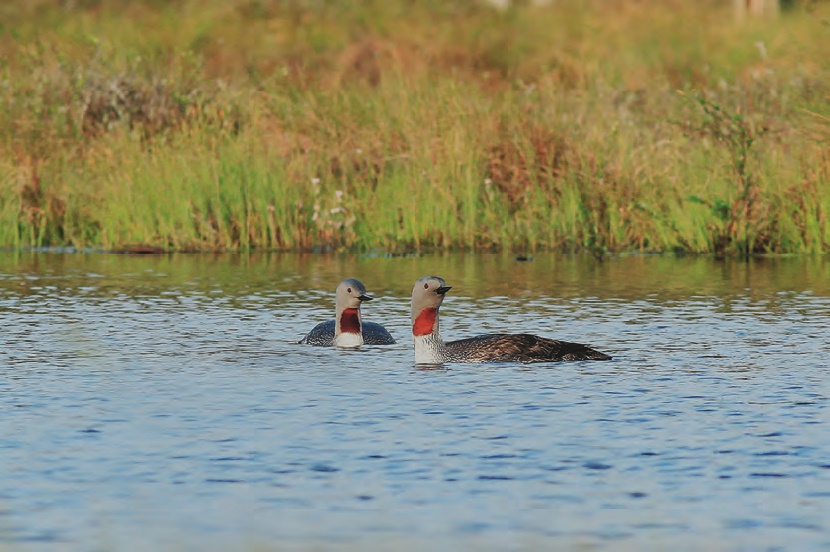Smålommens Gavia stellata häckningsframgång i relation till vattenkemi och fiskbeståndens sammansättning i olika fiskevatten
DOI:
https://doi.org/10.34080/os.v16.22708Nyckelord:
habitatval, val av boplats, klimateffekter, predator-bytesinteraktion, interaktion mellan predator och byte, häckningsbiologiAbstract
Breeding performance by Red-throated Diver Gavia stellata was compared to water chemistry, light penetration and density of fish in 34 freshwater lakes used for foraging in South and Central Sweden. The study covered around 25% of the breeding population in these parts of the country. Fishing lakes were overall nutrient-poor, and some of them were also acidic and had a poor buffering capacity. There were no relationships between breeding success and water chemistry (pH, alkalinity, total phosphorus), light penetration or impact of acidification. Species composition of the fish communities was characteristic for nutrient-poor lakes: on average 6.6 fish species per lake and dominance of Perca fluviatilis, Rutilus rutilus, Esox lucius and Coregonus albula. The survival of chicks was correlated to high abundance of cyprinid and salmonid fish, i.e. the dominant prey delivered to non-fledged chicks. Around 300 freshwater lakes are judged to be of importance as foraging sites for breeding Red-throated Divers in Sweden. Continuous and long-term liming is a prerequisite in order to maintain viable fish stocks in those lakes that are acid or have a poor buffering capacity.
Nedladdningar

Downloads
Publicerad
Referera så här
Nummer
Sektion
Licens
Författaren/författarna innehar copyright för varje enskilt bidrag, men samtliga bidrag är publicerade under en Creative Commons-licens, så att vem som helst kan dela och återanvända bidraget förutsatt att copyright-innehavaren erkänns.







